Reestablishing the Bottom Line with Episioplasty
By Rodger Barr DVM
Episioplasty is the surgical procedure designed to correct the painful chronic skin condition known as perivulvar dermatitis, vulvar fold dermatitis, or crotch rot. This condition is difficult to resolve conservatively, and if successful, requires a lifetime of management.
My goal is to educate owners of retired female racing Greyhound who have perivulvar dermatitis. I hope to provide the knowledge and understanding necessary to help make the decision as to whether to proceed with surgery or not. Just as with hock fractures, some require surgery and some do not. The goal is to resolve the problem satisfactorily while at the same time sparing the patient any unnecessary pain or suffering.
If I had had the foresight to photograph past cases of this condition I would not have to struggle with an illustration through words. Perivulvar dermatitis is the presence of deep folds surrounding the vulva resulting in a moist dermatitis, very red and inflamed and most commonly characterized by excessive licking. Other breeds develop this condition due to obesity, not so the greyhound. Female Greyhounds are given testosterone to prevent cycling during training and racing, this produces an underdeveloped juvenile vulva that is so small it is recessed, making the structure prone to excessive moisture and inflammation.
If you have a female who licks herself constantly, what should you do? Take her to a Veterinarian who is well versed in Greyhound issues. If you want to explore the region yourself, do so with caution. This area can be very painful. Even though we know your beloved Greyhound adores you, be forewarned that pain can result in an unexpected and uncharacteristic regrettable reaction. A muzzle would be wise in this situation, don’t hesitate to use it. Just glancing at the area rarely reveals the problem; you must gently pry the vulva out of its recessed location and observe the surrounding tissue. The area can be examined with you dog standing or while on her side, with someone restraining her. Move slowly, if it’s too painful, stop. If you get a good look, and the tissue is fire engine red with ulcerations and possibly smelly, it’s likely that surgery is the correct choice. If the area is inflamed but not ulcerated, you may have a chance at success with the conservative approach. The more recessed the vulva, the more likely surgery will be necessary. If a concomitant condition of hypoestrogen incontinence exists, this must also be managed in order to obtain optimum results.
When treating this problem medically, the first step is to break the vicious cycle of inflammation, irritation and subsequent licking, with the use of a Bitenot collar or a similar device. Greyhounds don’t tolerate Elizabethan collars as well even though the end result can be the same. The Bitenot collar prevents access to areas on the animal’s trunk only, not limbs. It is like a neck brace and it prevents the neck flexibility necessary to lick the perivulvar region. With the Bitenot in place the next goal is to reduce inflammation. There are many options here, but in my experience the use of a product called Neo-Predef Powder works quite well. This product comes in a puffer bottle allowing application without actually touching the sensitive tissue. Neo-Predef has an anti-inflammatory, an antibiotic, and a local anesthetic in it, and by its very nature as a powder tends to dry the area as well. Do not allow licking of this product, it will cause excessive drinking and prevent the area from healing. Prior to applying the topical product it usually helps to gently cleanse the area with either hydrogen peroxide (3%) or warm water with a disinfectant soap, as long as it is rinsed well. Systemic antibiotics can help in severe cases. If you should initially try the conservative approach and decide this is just not for you, surgery can still be performed, freeing you from lifetime management of this condition. Don’t forget if you are lucky enough to resolve this problem with twice daily cleansing and medicating, the problem will most certainly return with a vengeance if you stop treatment all together. Some animals require more treatment than others, but suffice it to say that a minimum of two to three treatments per week will be necessary to maintain your good results, some more often, some less.
If your pet is one who has a severe case or you don’t choose to manage a chronic problem for the life of your Greyhound, then surgery is your best option. Episioplasty is the removal of an elliptical shaped portion of skin above the diseased vulva, making certain to remove as much diseased skin as possible, and the subsequent reconnecting of the new skin edges with sutures or surgical staples. This procedure serves to lift the recessed vulva out of its pocket of tissue and out into the fresh air where moisture no longer accumulates. Post-operatively one must prevent self-mutilation with the aforementioned neck devices, but the recovery is usually uneventful. The results are often excellent, and this procedure tends to resolve the problem completely and forever.
The decision to do surgery should depend on the actual condition and what it will take to resolve it. I know many of you don’t fear the actual surgery. Some are concerned about post-surgical pain, but most FEAR anesthesia. If done properly, Anesthesia is very safe. First and foremost choose your Veterinarian wisely; what precautions does he or she take, do they do pre-surgical screens, and what type of pain management do they prescribe? Do they manage heat loss during surgery? Do they ALWAYS use intravenous fluids except for the very quick lacerations etc. Anesthesia on healthy dogs is nothing to fear as long as all precautions are taken and modern anesthetic agents are being used.
